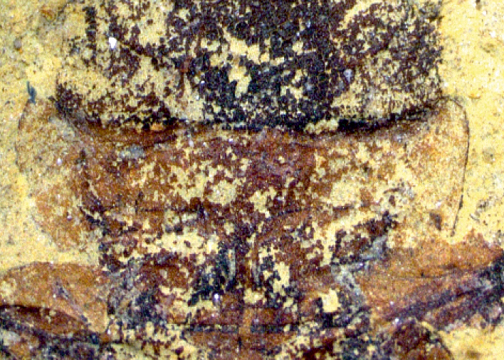Abstract
Stag beetles (Scarabaeoidea, Lucanidae) are a relatively large family, comprising over 1,300 extant species (Fujita, 2010). The characteristic features of Lucanidae are the presence of geniculate antennae with a pectinate club and, often, modified mandibles in males. Depending on the authors’ opinions regarding the affiliation of Paralucanus mesozoicus Nikolajev to a separate family, three or four extinct subfamilies of Lucanidae are distinguished: Protolucaninae, Paralucaninae, Ceruchitinae and Litholampriminae (Qi et al., 2022). Lucanidae are well represented in the paleontological record, with about 30 fossil species known, including representatives of all four recent subfamilies Lucaninae, Lampriminae, Syndesinae and Aesalinae. (Yu et al., 2024).
References
- Baraud, J. (1993) Les Coléoptères Lucanoidea de l’Europe et du Nord de l’Afrique. Monthly Bulletin of the Linnean Society of Lyon, 62, 42–64.
- Fujita, H. (2010) The lucanid beetles of the world. In: Mushi-sha’s iconographic series of insects. Vol. 6. Mushi-sha, Tokyo, 488 pp.
- Howden, H. & Lawrence, J. (1974) The New World Aesalinae, with notes on the North American lucanid subfamilies (Coleoptera, Lucanidae). Canadian Journal of Zoology, 52 (12), 1505–1510. https://doi.org/10.1139/z74-193
- Kim, I.S. & Farrell, B.D. (2015) Phylogeny of world stag beetles (Coleoptera: Lucanidae) reveals a Gondwanan origin of Darwin’s stag beetle. Molecular Phylogenetics and Evolution, 86, 35–48. https://doi.org/10.1016/j.ympev.2015.02.015
- Kopylov, D.S., Rasnitsyn, A.P., Aristov, D.S., Bashkuev, A.S., Bazhenova, N.V., Dmitrieva, V.Yu., Gorochov, A.V., Ignatov, M.S., Ivanov, V.D., Khramov, A.V., Legalov, A.A., Lukashevich, E.D., Mamontov, Yu.S., Melnitsky, S.I., Ogłaza, B., Ponomarenko, A.G., Prokin, A.A., Ryzhkova, O.V., Shmakov, A.S., Sinitshenkov, N.D., Solodovnikov, A.Yu., Strelnikova, O.D., Sukacheva, I.D., Uliakhin, A.V., Vasilenko, D.V., Wegierek, P., Yan, E.V. & Zmarzły, M. (2020) The Khasurty fossil insect Lagerstätte. Paleontological Journal, 54 (11), 1221–1394. https://doi.org/10.1134/s0031030120110027
- Kosenko, I.N., Pestchevitskaya, E.B., Efremenko, V.D., Metelkin, E.K., Yan, P.A., Rodchenko, A.P., Nikitenko, B.L. & Mirzabaev, D.A. (2023) Turga Lagerstätte (Middendorf’s outcrop, eastern Transbaikalia, Barremian–Aptian): Stratigraphic range and palaeoenvironments. Russian Geology and Geophysics, 64 (11), 1358–1381. https://doi.org/10.2113/RGG20234625
- Paulsen, M.J. & Hawks, D.C. (2008) Platyceroidini, a new tribe of North American stag beetles (Coleoptera: Lucanidae: Lucaninae). Insecta Mundi, 58, 1–2.
- Qi, Z.H., Tihelka, E., Cai, C.Y., Song, H.T. & Ai, H.M. (2022) Prolucanus beipiaoensis gen. et sp. nov.: The first fossil species of Lucaninae (Coleoptera: Lucanidae) from the Early Cretaceous of Northeastern China. Insects, 13 (3), 272. https://doi.org/10.3390/insects13030272
- Wu, L., Tang, H., Peng, L.F., Zhang, H.F. & Tong, H.R. (2022) The first representatives of Lucaninae from mid-Cretaceous Burmese amber based on two new species of Anisoodontus gen. nov. (Coleoptera: Scarabaeoidea: Lucanidae). Cretaceous Research, 135, 105208. https://doi.org/10.1016/j.cretres.2022.105208
- Yu, Y.L., Liu, Z.H., Li, Z.Q. & Cai, C.Y. (2024) Recent southern hemisphere Lamprimine stag beetle in Cretaceous Burmese amber and its biogeographic implications (Coleoptera: Lucanidae). Insects, 15 (9), 658. https://doi.org/10.3390/insects15090658
- Zhong, Y.T., Huyskens, M.H., Yin, Q.Z., Wang, Y.Q., Ma, Q. & Xu, Y.G. (2021) High-precision geochronological constraints on the duration of ‘Dinosaur Pompeii’ and the Yixian Formation. National Science Review, 8 (6), nwab063. https://doi.org/10.1093/nsr/nwab063


